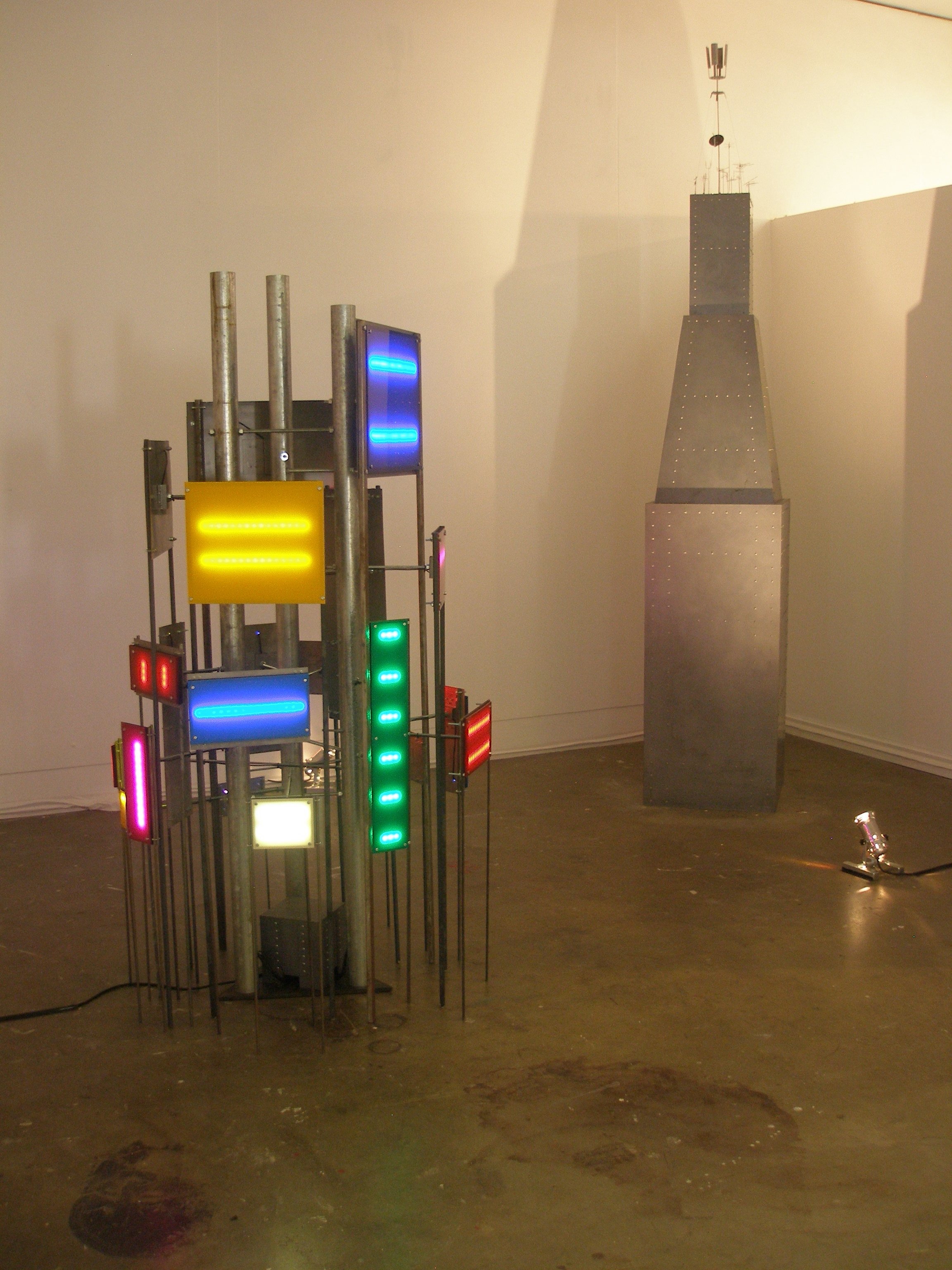The Environmental Research Initiative
for Art and our major sponsor, Jaycar
Two decades ago, I was asked to create and teach the first Electronics in Art class at UNSW’s College of Fine Arts. I approached Jaycar Electronics (now just called Jaycar) for sponsorship, and was met with enthusiasm by Jaycar’s then new and clearly very hands-on CEO, Stephen Van Wessem, who later came to class and took photos of the students with the equipment supplied by Jaycar.
This initial sponsorship led to 15 years of classes which, in turn, resulted in leading research into the use of energy systems in public art. Jaycar catalogues were ever present in class, and over the years my students have been regular visitors to Jaycar stores, where staff are patient and helpful with their often unorthodox art projects.
The success of the classes and resultant installations opened opportunities to exhibit electrically powered art on off-grid sites, eventually leading me to conceive and co-curate Australia’s first solar art exhibition, Desert Equinox. Staged in Broken Hill in 2012, Desert Equinox garnered significant support in the form of an Australian Research Council Linkage Grant. (You can see the original catalogue here and some media about the exhibition here.)
In parallel, to support our work, I founded and directed the Environmental Research Initiative for Art (ERIA) at UNSW with colleagues Bonita Ely and Martin Sims (both in this show).
In 2014 I conceived and curated a similar but even larger event – La Lune: Energy Producing Art – on Sydney’s Northern Beaches. Once again I approached the local Jaycar store, and they co-sponsored the event with Warringah Council. La Lune drew over 30,000 people in 10 nights, and was a double finalist in the Australian Event Awards 2014 (Best New Event / Best Achievement in Sustainability).
NOX Night Sculpture Walk – presented in collaboration with Randwick City Council in 2015 – attempted a similar outcome to La Lune ... with far less experienced artists: my students, at what is now called UNSW Art & Design. This event, too, hugely exceeded the expectations of all involved, with students stepping up to the mark to create three magical evenings of installation and performance.
Two years on, NOX Night Sculpture Walk 2017 again wowed the public. Awarded 'Highly Commended' in the Creative Communities category of the NSW Local Government Excellence Awards 2017, it cemented the biennial happening as a must-go event in Randwick's calendar, with families and art lovers alike coming from far and wide to see works by artists drawn from a UNSW class – now called Public Art – along with a few guest professional artists. See archived video here.
Falling serendipitously between Sydney's lockdowns (though only days before the second started), NOX Night Sculpture Walk 2021 offered locals and visitors from across Sydney a much-needed opportunity to get out and experience art while safely maintaining COVID precautions. Long queues caused by strict limits on on-site numbers proved no deterrent for the enthusiastic public, and the need to count them on and off the site provided an accurate measure of the event's popularity: 10,600 attendees across 3 evenings!
So now, a decade after pulling off Desert Equinox on the smell of an oily rag, the follow-up exhibition Desert Equinox 10th Anniversary (DE10) is being presented with federal government funding via the Australia Council for the Arts.
Having thus secured the bulk of our funding, I invited Jaycar to maintain its significant role in this very successful story by becoming our major commercial sponsor. Jaycar once again agreed, pledging a very generous cache of products – lithium batteries, solar modules, lights and so on, as required – that have made the exhibition viable on the scale that I was hoping for.
Thank you, Jaycar, for this long-term commitment to a genre of practice that is gaining international currency – one in which Australia is currently showing clear leadership.
Back
Student Zoë Coombs Marr working in the electronic class in the 2010s
Works by student Gemma O’Nions: Tower Series 1 and Tower Series 2 (2009)



